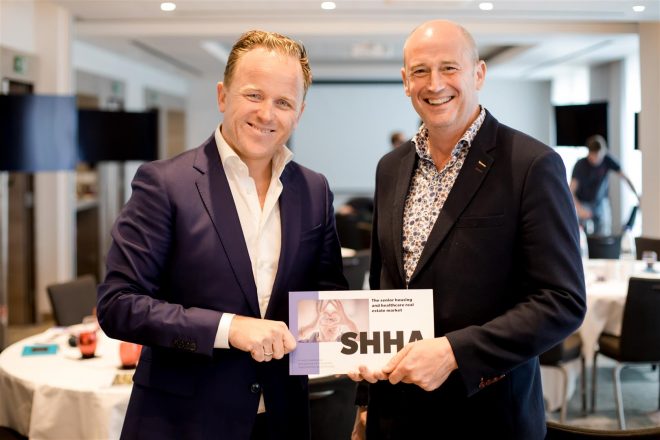Can next generation senior living deliver ESG benefits that are good for clients and society? Here, Box Architects CEO Graham Place discusses a sea-change in design, construction and delivery.
“Box recently became the first UK architects to join the European Senior Housing and Healthcare Association – and it’s been a real eye-opener. Previously, commercial developers focused on planning and delivery, but the conversation has shifted. Today, they’re thinking about a more balanced approach to schemes that deliver commercial, environmental and societal value. In short, impact investment is now good business.
It’s a change I’m hugely encouraged by. We’re in the midst of a global crisis in the sector in terms of outdated (and shortages of) retirement living stock, changing consumer demand and tough climate targets. So, we can’t keep developing more of the same.
As a creative industry, we must provide leadership and schemes that have a positive impact.
For us, client collaboration is key. Having worked with McCarthy Stone for more than a decade, we’ve seen innovation flourish. Together, we’ve made massive strides in design, construction and delivery.
Take their Springfield Park development in Liverpool, for example. Here, on the former site of the Alder Hey Children’s Hospital, we’re helping McCarthy Stone embrace modern methods of construction (MMC) to create next generation senior living. Following detailed design, the development will have a factory-manufactured structure that’s assembled on site for less wasteful and quicker construction, where the impact on neighbours is minimised. Energy use will be reduced by factory-controlled techniques that improve thermal performance of the building itself, and by ongoing energy solutions that combine solar systems and air source heat pumps with new levels of insulation.
This collaborative, impact-driven approach well also see us focus on quality of living – better daylight, air quality, noise attenuation, space and comfort, and architecture that makes a positive environmental impact – while making use of brownfield land and introducing landscaping will supports biodiversity.
Much is said about MMC creating ‘cookie-cutter’ buildings, but we see good design as creating sympathetic architecture while embracing innovation.
We’re also working with McCarthy Stone on Poppy Grange in Maghull near Liverpool, a retirement living development on a canal-side location, where the local architecture is of particular importance. The project will use low-impact MMC to reduce energy bills, waste and construction times, but the design will still respect the local vernacular with the use of red brick and pitched slate roofs. Not all MMC buildings are the same, and this development is a good example of how the method is just as applicable in a traditional setting as in a modern one.
Creating the next generation of retirement homes using eco-friendly modern methods of construction is predicted to cut development times by as much as 50% and this will fast-track the delivery of housing for older people. It’s good business and it’s good for the environment and society.
But it doesn’t stop there. Across our business, whether it’s student accommodation, office development, public sector facilities, leisure projects or retirement living, we’re always thinking about efficient design, modern methods of construction and projects that support a sustainable future.”
